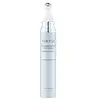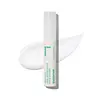What's inside
What's inside
 Key Ingredients
Key Ingredients

 Benefits
Benefits

 Concerns
Concerns

No concerns
 Ingredients Side-by-side
Ingredients Side-by-side

Water
Skin ConditioningGlycerin
HumectantButylene Glycol
HumectantCaprylic/Capric Triglyceride
MaskingDipropylene Glycol
HumectantHydrogenated Poly(C6-14 Olefin)
EmollientNiacinamide
SmoothingMethyl Trimethicone
Skin ConditioningC12-16 Alcohols
EmollientCaprylic/Capric/Myristic/Stearic Triglyceride
EmollientSqualane
EmollientCetearyl Alcohol
EmollientPersea Gratissima Oil
Skin ConditioningPalmitic Acid
EmollientHydrogenated Lecithin
EmulsifyingChlorella Vulgaris Extract
Skin ConditioningGlucose
HumectantStearyl Alcohol
EmollientCetyl Alcohol
EmollientSodium Acrylate/Sodium Acryloyldimethyl Taurate Copolymer
Emulsion StabilisingHydroxyacetophenone
AntioxidantPolyisobutene
Fructooligosaccharides
HumectantFructose
HumectantGlyceryl Stearate
EmollientPanthenol
Skin ConditioningPentaerythrityl Distearate
EmulsifyingSodium Polyacrylate
AbsorbentHydroxyethyl Acrylate/Sodium Acryloyldimethyl Taurate Copolymer
Emulsion StabilisingEthylhexylglycerin
Skin ConditioningDipotassium Glycyrrhizate
HumectantParfum
MaskingXanthan Gum
EmulsifyingCollagen
MoisturisingAdenosine
Skin ConditioningSodium Phytate
Caprylyl/Capryl Glucoside
CleansingSorbitan Oleate
EmulsifyingHydrolyzed Corn Starch
HumectantLeuconostoc/Radish Root Ferment Filtrate
AntimicrobialSucrose
HumectantDextrin
AbsorbentTheobroma Cacao Seed Extract
AntioxidantMyristyl Alcohol
EmollientAscorbic Acid Polypeptide
AntioxidantRosmarinus Officinalis Leaf Water
MaskingLauryl Alcohol
EmollientAspalathus Linearis Leaf Extract
Skin ConditioningHibiscus Sabdariffa Flower Extract
Skin ConditioningMethylpropanediol
SolventTocopherol
AntioxidantCarbomer
Emulsion StabilisingDipeptide Diaminobutyroyl Benzylamide Diacetate
Skin ConditioningPalmitoyl Tripeptide-5
Skin ConditioningPolysorbate 20
EmulsifyingPalmitoyl Tripeptide-1
Skin ConditioningPalmitoyl Tetrapeptide-7
Skin ConditioningWater, Glycerin, Butylene Glycol, Caprylic/Capric Triglyceride, Dipropylene Glycol, Hydrogenated Poly(C6-14 Olefin), Niacinamide, Methyl Trimethicone, C12-16 Alcohols, Caprylic/Capric/Myristic/Stearic Triglyceride, Squalane, Cetearyl Alcohol, Persea Gratissima Oil, Palmitic Acid, Hydrogenated Lecithin, Chlorella Vulgaris Extract, Glucose, Stearyl Alcohol, Cetyl Alcohol, Sodium Acrylate/Sodium Acryloyldimethyl Taurate Copolymer, Hydroxyacetophenone, Polyisobutene, Fructooligosaccharides, Fructose, Glyceryl Stearate, Panthenol, Pentaerythrityl Distearate, Sodium Polyacrylate, Hydroxyethyl Acrylate/Sodium Acryloyldimethyl Taurate Copolymer, Ethylhexylglycerin, Dipotassium Glycyrrhizate, Parfum, Xanthan Gum, Collagen, Adenosine, Sodium Phytate, Caprylyl/Capryl Glucoside, Sorbitan Oleate, Hydrolyzed Corn Starch, Leuconostoc/Radish Root Ferment Filtrate, Sucrose, Dextrin, Theobroma Cacao Seed Extract, Myristyl Alcohol, Ascorbic Acid Polypeptide, Rosmarinus Officinalis Leaf Water, Lauryl Alcohol, Aspalathus Linearis Leaf Extract, Hibiscus Sabdariffa Flower Extract, Methylpropanediol, Tocopherol, Carbomer, Dipeptide Diaminobutyroyl Benzylamide Diacetate, Palmitoyl Tripeptide-5, Polysorbate 20, Palmitoyl Tripeptide-1, Palmitoyl Tetrapeptide-7
Water
Skin ConditioningButylene Glycol
HumectantGlycerin
HumectantPropanediol
SolventNiacinamide
SmoothingDimethicone
EmollientPhenyl Trimethicone
Skin ConditioningCaffeine
Skin Conditioning1,2-Hexanediol
Skin ConditioningSqualane
EmollientPolysorbate 20
EmulsifyingPolysilicone-11
Carbomer
Emulsion StabilisingPCA Dimethicone
Skin ConditioningPolyacrylate Crosspolymer-6
Emulsion StabilisingTromethamine
BufferingBoron Nitride
AbsorbentSodium Polyacryloyldimethyl Taurate
Emulsion StabilisingCI 77891
Cosmetic ColorantDimethiconol
EmollientSynthetic Fluorphlogopite
Glyceryl Caprylate
EmollientSodium Metaphosphate
BufferingEthylhexylglycerin
Skin ConditioningAdenosine
Skin ConditioningCamellia Sinensis Leaf Extract
AntimicrobialArginine
MaskingCyclodextrin
AbsorbentHydroxypropyl Cyclodextrin
MaskingMaltodextrin
AbsorbentCitric Acid
BufferingSodium Hyaluronate
HumectantTin Oxide
AbrasiveHydrolyzed Hyaluronic Acid
HumectantSodium Hyaluronate Crosspolymer
HumectantHyaluronic Acid
HumectantTocopherol
AntioxidantSodium Acetylated Hyaluronate
HumectantWater, Butylene Glycol, Glycerin, Propanediol, Niacinamide, Dimethicone, Phenyl Trimethicone, Caffeine, 1,2-Hexanediol, Squalane, Polysorbate 20, Polysilicone-11, Carbomer, PCA Dimethicone, Polyacrylate Crosspolymer-6, Tromethamine, Boron Nitride, Sodium Polyacryloyldimethyl Taurate, CI 77891, Dimethiconol, Synthetic Fluorphlogopite, Glyceryl Caprylate, Sodium Metaphosphate, Ethylhexylglycerin, Adenosine, Camellia Sinensis Leaf Extract, Arginine, Cyclodextrin, Hydroxypropyl Cyclodextrin, Maltodextrin, Citric Acid, Sodium Hyaluronate, Tin Oxide, Hydrolyzed Hyaluronic Acid, Sodium Hyaluronate Crosspolymer, Hyaluronic Acid, Tocopherol, Sodium Acetylated Hyaluronate
 Reviews
Reviews

Ingredients Explained
These ingredients are found in both products.
Ingredients higher up in an ingredient list are typically present in a larger amount.
Adenosine is in every living organism. It is one of four components in nucleic acids that helps store our DNA.
Adenosine has many benefits when used. These benefits include hydrating the skin, smoothing skin, and reducing wrinkles. Once applied, adenosine increases collagen production. It also helps with improving firmness and tissue repair.
Studies have found adenosine may also help with wound healing.
In skincare products, Adenosine is usually derived from yeast.
Learn more about AdenosineButylene Glycol (or BG) is used within cosmetic products for a few different reasons:
Overall, Butylene Glycol is a safe and well-rounded ingredient that works well with other ingredients.
Though this ingredient works well with most skin types, some people with sensitive skin may experience a reaction such as allergic rashes, closed comedones, or itchiness.
Learn more about Butylene GlycolCarbomer is a polymer of acrylic acid. Its main role is to create a gel consistency.
A high amount of carbomer can cause pilling or balling up of products. Don't worry, most products contain 1% or less of carbomer.
Ethylhexylglycerin (we can't pronounce this either) is commonly used as a preservative and skin softener. It is derived from glyceryl.
You might see Ethylhexylglycerin often paired with other preservatives such as phenoxyethanol. Ethylhexylglycerin has been found to increase the effectiveness of these other preservatives.
Glycerin is already naturally found in your skin. It helps moisturize and protect your skin.
A study from 2016 found glycerin to be more effective as a humectant than AHAs and hyaluronic acid.
As a humectant, it helps the skin stay hydrated by pulling moisture to your skin. The low molecular weight of glycerin allows it to pull moisture into the deeper layers of your skin.
Hydrated skin improves your skin barrier; Your skin barrier helps protect against irritants and bacteria.
Glycerin has also been found to have antimicrobial and antiviral properties. Due to these properties, glycerin is often used in wound and burn treatments.
In cosmetics, glycerin is usually derived from plants such as soybean or palm. However, it can also be sourced from animals, such as tallow or animal fat.
This ingredient is organic, colorless, odorless, and non-toxic.
Glycerin is the name for this ingredient in American English. British English uses Glycerol/Glycerine.
Learn more about GlycerinNiacinamide is a multitasking form of vitamin B3 that strengthens the skin barrier, reduces pores and dark spots, regulates oil, and improves signs of aging.
And the best part? It's gentle and well-tolerated by most skin types, including sensitive and reactive skin.
You might have heard of "niacin flush", or the reddening of skin that causes itchiness. Niacinamide has not been found to cause this.
In very rare cases, some individuals may not be able to tolerate niacinamide at all or experience an allergic reaction to it.
If you are experiencing flaking, irritation, and dryness with this ingredient, be sure to double check all your products as this ingredient can be found in all categories of skincare.
When incorporating niacinamide into your routine, look out for concentration amounts. Typically, 5% niacinamide provides benefits such as fading dark spots. However, if you have sensitive skin, it is better to begin with a smaller concentration.
When you apply niacinamide to your skin, your body converts it into nicotinamide adenine dinucleotide (NAD). NAD is an essential coenzyme that is already found in your cells as "fuel" and powers countless biological processes.
In your skin, NAD helps repair cell damage, produce new healthy cells, support collagen production, strengthen the skin barrier, and fight environmental stressors (like UV and pollution).
Our natural NAD levels start to decline with age, leading to slower skin repair, visible aging, and a weaker skin barrier. By providing your skin niacinamide, you're recharging your skin's NAD levels. This leads to stronger, healthier, and younger looking skin.
Another name for vitamin B3 is nicotinamide. This vitamin is water-soluble and our bodies don't store it. We obtain Vitamin B3 from either food or skincare. Meat, fish, wheat, yeast, and leafy greens contain vitamin B3.
The type of niacinamide used in skincare is synthetically created.
Learn more about NiacinamidePolysorbate 20 is made by combining ethoxylation of sorbitan, ethylene oxide, and lauric acid. It is a mild cleansing agent, surfactant, and emulsifier.
As a surfactant, it helps collect dirt and oils for washing. Emulsifiers prevent oils and water from separating.
Polysorbate 20 also adds scent to a product. Since it is made using sorbitol, it has a sweet scent. Sorbitol can also be found in fruits such as apples and peaches.
The lauric acid used to create Polysorbate 20 is often derived from coconuts.
Polysorbate 20 may not be fungal acne safe.
Learn more about Polysorbate 20Squalane is an emollient that helps the skin hold onto moisture. It's an oily liquid that occurs naturally in certain types of fish and plant oils.
Because squalane boosts hydration in the skin, it also comes with plenty of benefits: it is an antioxidant and can help fight free radicals and skin damage. Squalane is also found to have a detoxifying effect when applied.
Squalane comes from squalene, which occurs naturally within the sebum of our skin. It is one of the oils our skin produces to keep itself hydrated. Squalane is the hydrogenated version of squalene and has a longer shelf life.
Research shows that squalane is non-irritating (even at 100% concentration).
In general, it's a fantastic ingredient. It does a great job at hydrating the skin, and it's suitable for those with sensitive skin.
The source of squalane may impact malassezia / fungal acne. This is because olive oil derived squalane can contain impurities such as fatty acids and plant waxes. Sugarcane derived squalane is recommended for anyone with malassezia concerns.
Is squalane vegan?
This depends on the source. Squalane can be derived from both plants and animals. Most squalane used in skincare comes from plants.
Please note: the source of squalane is only known if disclosed by the brand. We recommend reaching out to the brand if you have any questions about their squalane.
Read more about squalene with an "e".
Is squalane an oil?
Squalane is often called an oil, but it’s technically not; it’s a hydrocarbon, meaning it’s only made of carbon and hydrogen, unlike true oils which are triglycerides made of fatty acids and glycerol.
The term “oil-free” isn’t regulated, so companies can define it however they want. Some exclude all oils, while others just avoid mineral oil or comedogenic oils.
While some people avoid oils thinking they cause breakouts, the right kind of oil (or oil-like ingredient like squalane) can actually help balance and hydrate your skin. It’s worth testing out simple oils or squalane to see what works best for your skin.
Learn more about SqualaneTocopherol (also known as Vitamin E) is a common antioxidant used to help protect the skin from free-radicals and strengthen the skin barrier. It's also fat soluble - this means our skin is great at absorbing it.
Vitamin E also helps keep your natural skin lipids healthy. Your lipid skin barrier naturally consists of lipids, ceramides, and fatty acids. Vitamin E offers extra protection for your skin’s lipid barrier, keeping your skin healthy and nourished.
Another benefit is a bit of UV protection. Vitamin E helps reduce the damage caused by UVB rays. (It should not replace your sunscreen). Combining it with Vitamin C can decrease sunburned cells and hyperpigmentation after UV exposure.
You might have noticed Vitamin E + C often paired together. This is because it is great at stabilizing Vitamin C. Using the two together helps increase the effectiveness of both ingredients.
There are often claims that Vitamin E can reduce/prevent scarring, but these claims haven't been confirmed by scientific research.
Learn more about TocopherolWater. It's the most common cosmetic ingredient of all. You'll usually see it at the top of ingredient lists, meaning that it makes up the largest part of the product.
So why is it so popular? Water most often acts as a solvent - this means that it helps dissolve other ingredients into the formulation.
You'll also recognize water as that liquid we all need to stay alive. If you see this, drink a glass of water. Stay hydrated!
Learn more about Water